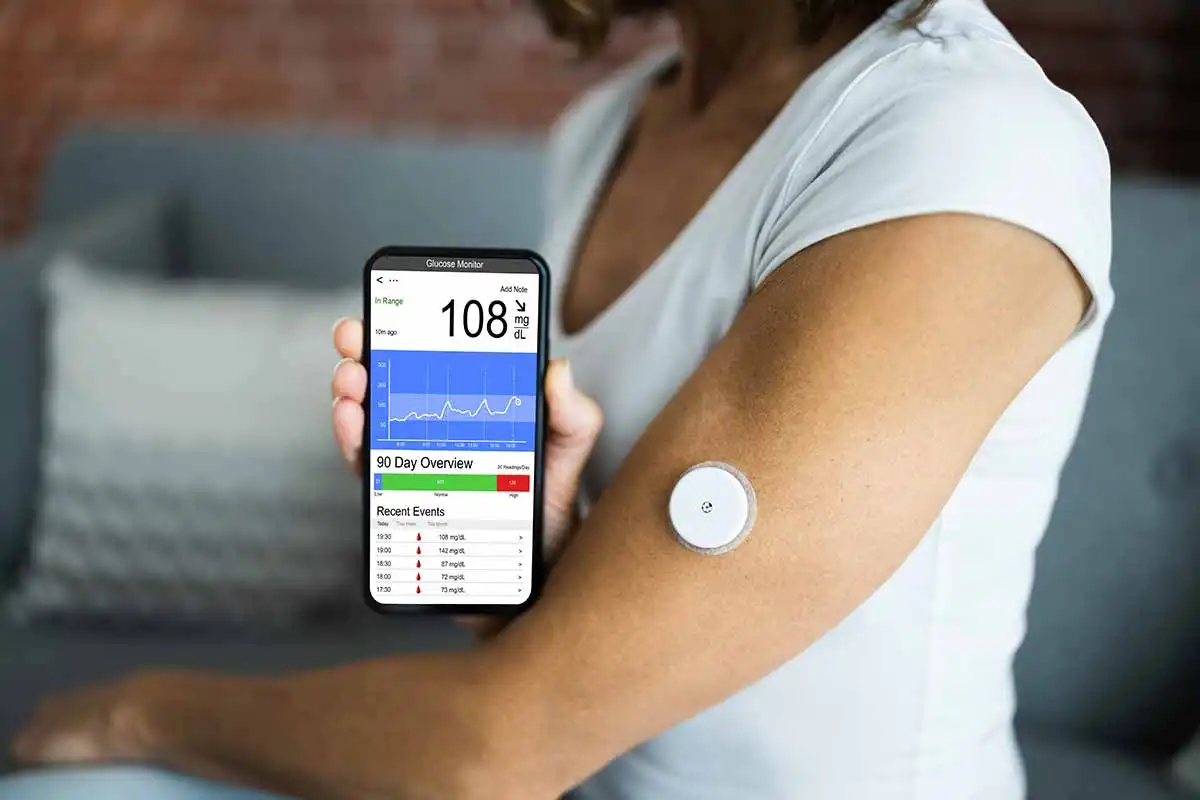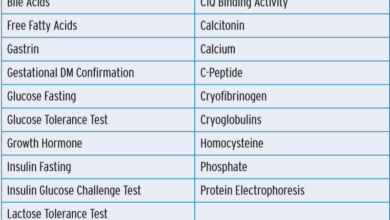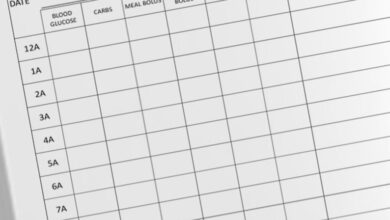
Continuous glucose monitoring and you: This journey delves into the world of CGM, exploring its technology, real-world applications, and impact on your life. From understanding the basics of different CGM systems to personal experiences and lifestyle management strategies, we’ll uncover how CGM can empower you to take control of your health. Get ready to discover the transformative potential of this innovative technology and how it can be tailored to your unique needs.
We’ll examine the accuracy and reliability of various CGM devices, comparing different brands and their features. We’ll also explore the benefits and drawbacks, and how CGM fits into managing diabetes. This guide provides a comprehensive overview, covering the setup process, personal stories, lifestyle adjustments, and the evolving technology behind CGM.
Introduction to Continuous Glucose Monitoring (CGM)
Continuous Glucose Monitoring (CGM) systems are revolutionizing diabetes management by providing real-time glucose readings, offering a significant advancement over traditional finger-prick methods. These devices continuously track glucose levels in interstitial fluid, offering a more comprehensive view of glucose fluctuations throughout the day and night, enabling better understanding of patterns and proactive adjustments to treatment plans. This detailed look at CGM technology will explore its fundamental principles, various systems, accuracy, benefits, drawbacks, and practical applications in diabetes management.
Basic Principles of CGM Technology
CGM devices function by measuring glucose levels in the interstitial fluid, which closely reflects blood glucose levels. This is achieved using a sensor placed under the skin, typically on the arm or abdomen. The sensor contains a glucose-sensing electrode that detects glucose concentrations in the fluid surrounding the sensor. These measurements are then wirelessly transmitted to a receiver or smartphone app for interpretation.
Different CGM Systems Available
Several CGM systems are available, each with unique features and functionalities. These systems can be broadly categorized into:
- Flash Glucose Monitoring Systems: These systems collect glucose readings periodically, typically every 15 minutes, and store the data. This data can then be reviewed on a dedicated receiver or smartphone app.
- Real-Time CGM Systems: These systems continuously measure and transmit glucose data wirelessly, providing a near-real-time display of glucose levels. They typically offer more frequent readings and alerts for low or high glucose levels, enabling users to make immediate adjustments to their insulin regimens.
Accuracy and Reliability of CGM Devices
The accuracy and reliability of CGM devices vary depending on the specific system and individual factors. While CGM systems have significantly improved in recent years, some factors can influence accuracy. These factors include the location of the sensor insertion, the user’s activity level, and the presence of inflammation or infection at the sensor site.
Benefits and Drawbacks of Using CGM
CGM offers several benefits for diabetes management:
- Improved Glucose Control: Real-time glucose data empowers individuals to make more informed decisions about their food choices, insulin dosages, and physical activities, leading to better glucose control.
- Reduced Hypoglycemia Risk: Early detection of low blood sugar (hypoglycemia) allows users to take timely actions to prevent severe episodes.
- Enhanced Lifestyle Flexibility: CGM allows for a more flexible lifestyle, reducing the burden of frequent blood glucose checks.
CGM devices also have some drawbacks:
- Potential for Sensor-Related Issues: Accuracy can be affected by sensor-related problems such as sensor malfunction, incorrect calibration, or sensor placement issues.
- Cost: CGM devices can be more expensive than traditional glucose meters.
- Learning Curve: Interpreting CGM data and adjusting insulin regimens may require some learning and practice.
Role of CGM in Managing Diabetes
CGM plays a vital role in optimizing diabetes management by providing a comprehensive understanding of glucose fluctuations. This allows for personalized treatment plans, better adherence to medication regimens, and improved overall health outcomes.
Steps Involved in Setting Up and Using a CGM Device
Setting up and using a CGM device involves several steps, including:
- Sensor Insertion: The sensor is typically inserted under the skin and secured in place.
- Device Pairing: The CGM device is paired with a receiver or smartphone app to allow data transmission.
- Data Monitoring: Glucose data is regularly monitored and reviewed on the receiver or app.
- Calibration: Calibration with a finger-prick blood glucose test is usually required periodically to ensure accuracy.
Comparison of Different CGM Brands
| Brand | Features | Accuracy | Cost |
|---|---|---|---|
| Brand A | Real-time readings, mobile app integration, alerts | High accuracy | High |
| Brand B | Flash glucose monitoring, periodic readings, receiver | Moderate accuracy | Medium |
| Brand C | Real-time readings, continuous glucose tracking, remote monitoring | High accuracy | High |
Personal Experiences with CGM
Continuous Glucose Monitoring (CGM) has revolutionized diabetes management, offering real-time insights into blood glucose levels. This detailed look delves into the practical applications of CGM, examining personal experiences, the impact on daily life, and the varied user experiences with different devices. We’ll explore how CGM has transformed blood sugar control and the challenges encountered by users.CGM devices provide a constant stream of glucose data, enabling users to understand how various factors like food, exercise, and medications affect their blood sugar.
This continuous awareness empowers individuals to make informed decisions about their health, leading to more stable blood glucose levels and improved overall well-being. Sharing personal experiences offers invaluable insights into the practical aspects of C.G.M. use and its real-world impact.
Real-Life Stories of CGM Users
Numerous individuals have reported positive outcomes from utilizing CGM. One user, Sarah, a young professional with type 1 diabetes, describes how CGM allowed her to better manage her blood sugar fluctuations during stressful workdays. She learned to anticipate dips and spikes, allowing her to adjust her insulin dosage and dietary intake more effectively, leading to improved energy levels and reduced episodes of hypoglycemia.
Another user, David, a retired teacher with type 2 diabetes, found CGM to be instrumental in identifying subtle patterns in his blood sugar response to different meals, enabling him to make personalized dietary choices for better control.
Impact of CGM on Daily Life
CGM has demonstrably improved the daily lives of many individuals with diabetes. It provides a sense of empowerment, allowing users to take proactive steps in managing their blood sugar levels. Users report a significant reduction in anxiety related to unpredictable blood sugar swings. Improved sleep quality and increased confidence in managing their condition are common positive outcomes.
For example, individuals can more easily adjust their insulin doses and make dietary changes to stay within their target ranges, leading to increased spontaneity in daily activities.
Ever wondered about continuous glucose monitoring (CGM) and its impact on your health? It’s a game-changer for managing blood sugar levels, but sometimes the unexpected pops up, like the question of whether sparkling water contributes to weight gain. If you’re curious about the potential link between fizzy drinks and your waistline, check out this insightful article on can sparkling water cause weight gain.
Ultimately, understanding your body’s responses, whether it’s CGM readings or the effects of different drinks, is key to informed decisions about your health journey.
CGM’s Role in Improved Blood Sugar Control
CGM facilitates proactive blood sugar management. By consistently monitoring glucose levels, users can quickly identify trends and adjust their lifestyle choices, medications, or insulin doses as needed. This continuous feedback loop leads to a more precise understanding of individual responses to different foods, activities, and medications. For instance, a user might notice a particular carbohydrate source consistently elevates their blood sugar and adjust their intake accordingly.
This precision and awareness contribute significantly to improved blood sugar control.
Comparison of CGM Device User Experiences
User experiences with various CGM devices vary. Some devices offer detailed data visualization and personalized insights, while others focus on basic readings. Features such as ease of use, data analysis tools, and the ability to seamlessly integrate with other health apps are crucial factors influencing user experience. Early adopters of certain CGM systems reported that the ease of data access and interpretation was paramount, while others valued the ease of sensor insertion and wearability.
Challenges Encountered While Using CGM
Despite the numerous benefits, CGM usage isn’t without challenges. One significant hurdle is the cost of the devices and supplies, which can be a barrier for some individuals. Sensor insertion and the need for calibration can be inconvenient for some users. Additionally, interpretation of the data and adapting to the new information can take time and effort.
The initial learning curve can be a challenge, and the need for careful data interpretation to avoid misinterpretations can lead to additional time requirements.
User Feedback on CGM Features
| Feature | Positive Feedback | Negative Feedback |
|---|---|---|
| Ease of use | Intuitive interfaces, simple setup procedures, and minimal training requirements are reported. | Some devices have complex software, requiring significant time to learn how to use and interpret data effectively. |
| Data accuracy | Reliable and consistent readings contribute to better glucose management and decision-making. | Inconsistent readings or sensor errors can lead to misinterpretations and inaccurate adjustments to treatment plans. |
| Integration with other health apps | Seamless integration with other health apps allows for comprehensive data analysis and personalized insights. | Limited integration with certain apps or systems can restrict the ability to effectively manage health data. |
CGM and Lifestyle Management
Continuous Glucose Monitoring (CGM) offers a powerful tool for refining lifestyle choices, allowing for a more personalized approach to diabetes management. By providing real-time insights into blood sugar fluctuations, CGM empowers individuals to make informed decisions about diet, exercise, stress management, and insulin adjustments, leading to improved overall health and well-being. It’s a journey of continuous learning and adaptation, transforming reactive management into proactive control.
Dietary Choices and CGM Data
CGM data provides invaluable feedback on how different foods affect blood sugar levels. This knowledge is critical for tailoring dietary choices to individual needs and preferences. Understanding the blood sugar response to specific meals allows for more effective adjustments to maintain healthy glucose levels.
| Meal Type | Blood Sugar Response | Dietary Adjustments |
|---|---|---|
| High-glycemic index meal (e.g., white bread, sugary drinks) | Rapid and significant rise in blood sugar | Reduce portion sizes, incorporate more fiber-rich foods, consider timing meals with exercise, and choose lower glycemic index alternatives. |
| Low-glycemic index meal (e.g., vegetables, lean protein) | Gradual and moderate rise in blood sugar | Maintain consistent portion sizes, adjust meal timing to suit individual needs. |
| High-protein meal (e.g., lean meat, fish) | Generally stable blood sugar response | Balance with complex carbohydrates and healthy fats to maintain overall blood glucose balance. |
| Meal with high fat content (e.g., fried foods) | May have a delayed but substantial impact on blood sugar, potentially causing a rise later | Combine with fiber-rich carbohydrates and lean protein for balanced impact. |
Impact of CGM on Exercise Routines
CGM data enables a more informed approach to exercise. By tracking blood sugar levels before, during, and after physical activity, individuals can anticipate potential drops or spikes and adjust their insulin doses or carbohydrate intake accordingly. This proactive approach enhances the safety and effectiveness of exercise routines. Real-time monitoring provides crucial insights into how different types and intensities of exercise affect glucose levels, allowing for more personalized exercise plans.
CGM and Stress Management
Stress can significantly impact blood sugar control. CGM can identify patterns linking stress levels with blood glucose fluctuations, providing valuable insights into stress management strategies. Recognizing these patterns allows individuals to develop coping mechanisms and interventions to minimize the impact of stress on their glucose levels.
Effectiveness of Lifestyle Interventions
Different lifestyle interventions, such as dietary modifications, exercise routines, and stress reduction techniques, can be evaluated based on their impact on blood glucose levels as tracked by CGM. The data provides quantifiable results to adjust and refine strategies for optimal glucose management. Comparing the effectiveness of different interventions using CGM data empowers individuals to choose the most suitable approaches for their specific needs and preferences.
Optimizing Insulin Dosing with CGM Data
CGM data allows for more precise insulin dosing. Real-time glucose readings allow for adjustments in insulin delivery based on individual needs and circumstances. This proactive approach to insulin management improves blood sugar control and reduces the risk of hypoglycemia or hyperglycemia.
Predicting Future Blood Sugar Levels
CGM data facilitates the prediction of future blood sugar levels. By identifying trends and patterns in glucose readings, individuals and healthcare professionals can anticipate potential issues and adjust lifestyle choices or insulin dosages accordingly. This predictive capability minimizes the likelihood of unexpected blood sugar fluctuations and enables more proactive management. Examples include recognizing patterns before meals or anticipating glucose spikes after certain activities.
Technology and Future of CGM
Continuous Glucose Monitoring (CGM) technology is rapidly evolving, promising even more precise and personalized glucose management for people with diabetes. This advancement is driven by a desire to improve the quality of life for those living with this chronic condition, reducing the burden of frequent blood glucose testing and promoting better control. The future of CGM lies in innovation, integration, and ethical considerations.The current generation of CGM systems provides valuable data, but future developments aim to address limitations like sensor size, calibration frequency, and data interpretation.
This evolution will be crucial in enhancing the user experience and enabling more effective diabetes management strategies.
Continuous glucose monitoring (CGM) is becoming increasingly important for managing blood sugar levels, and it’s a game-changer for many. But, as we consider the broader health landscape, the question of whether schools should screen children for diabetes and heart disease becomes relevant. This crucial discussion raises important questions about early detection and prevention, and resources needed for such programs.
For example, should schools screen children for diabetes heart disease ? Ultimately, understanding these issues can inform how we approach CGM use and its potential benefits for individuals and the wider community.
Emerging CGM Technologies
Recent advancements in CGM technology are pushing the boundaries of what’s possible. Miniaturized sensors, implanted sensors, and non-invasive optical sensors are being developed. Implanted sensors, while offering continuous data collection, present challenges in terms of patient comfort and potential complications. Non-invasive optical sensors, potentially using near-infrared light, offer the promise of eliminating the need for skin punctures, making monitoring more convenient.
Miniaturized sensors are also being developed, with the goal of making the devices smaller and more discreet, potentially improving patient compliance.
Integration with Wearable Devices
The convergence of CGM with other wearable technologies holds significant potential for improved diabetes management. Imagine a system seamlessly integrating CGM data with activity trackers, sleep monitors, and even smartwatches. This integration can provide a comprehensive view of a person’s overall health and well-being, offering insights into how various factors, such as exercise and sleep, influence blood glucose levels.
This interconnectivity can lead to more personalized recommendations for lifestyle adjustments, enhancing the effectiveness of diabetes management strategies.
Ethical Considerations of CGM Data Privacy
The increasing reliance on CGM data raises crucial ethical considerations regarding data privacy. Security measures and data encryption protocols are essential to protect sensitive health information from unauthorized access. Data sharing protocols with healthcare providers must be transparent and strictly regulated to ensure patient consent and control over their personal health data. The development of robust security systems and transparent data-sharing policies are critical to maintaining trust and ensuring ethical use of CGM technology.
Future of CGM in Managing Chronic Diseases
CGM technology is not limited to diabetes management. Its potential extends to other chronic conditions, including those involving metabolic dysfunction. Future research is exploring the use of CGM for early detection of various health issues. As data analysis and machine learning algorithms improve, CGM can play a critical role in enabling earlier intervention and personalized treatment plans, ultimately leading to better health outcomes.
Predictions for the Evolution of CGM Technology
CGM technology is expected to become even more accurate, user-friendly, and affordable. The evolution of non-invasive sensor technology, coupled with sophisticated data analysis algorithms, will significantly improve the precision and reliability of glucose readings. Furthermore, the incorporation of artificial intelligence (AI) and machine learning will likely lead to more personalized insights and proactive management strategies. This will likely translate to more effective management of chronic diseases, leading to improved health outcomes.
Potential Future CGM Features and Benefits
| Feature | Description | Anticipated Impact |
|---|---|---|
| Real-time glucose prediction | CGM systems will predict future glucose levels based on current data and historical patterns. | Improved proactive management, enabling timely interventions to prevent hyper- or hypoglycemia. |
| Integration with insulin pumps | Automated insulin delivery based on real-time glucose readings. | Enhanced accuracy and personalization of insulin therapy, potentially reducing the need for manual adjustments. |
| Personalized glucose management plans | Systems will generate customized plans based on individual needs and preferences. | Increased patient engagement and improved long-term outcomes. |
| Remote monitoring and support | Healthcare providers can remotely monitor and support patients with diabetes. | Enhanced access to care, improved patient engagement, and reduced hospitalizations. |
CGM and Specific Populations
Continuous Glucose Monitoring (CGM) has revolutionized diabetes management, offering real-time glucose readings and empowering individuals to make informed decisions. However, the optimal application of CGM varies significantly across different populations, demanding tailored approaches and considerations. This section delves into the unique needs and challenges faced by specific groups, from children to pregnant women and older adults, highlighting the importance of personalized CGM strategies.CGM devices and their applications are continually evolving, and the benefits are now recognized across various populations.
The specific requirements and challenges faced by different groups necessitate distinct support systems and individualized approaches to ensure optimal outcomes.
Continuous glucose monitoring (CGM) is all about understanding your blood sugar levels, and that’s a powerful tool for managing your health. However, sometimes, similar to the challenges faced by people with HIV who might be hesitant to disclose their status to others, there can be emotional barriers to fully embracing CGM. Opening up about your CGM journey and seeking support from friends and family, like the support systems available to people in the people with hiv reluctant to tell others community, can make a huge difference.
Ultimately, understanding your own needs and seeking support is key to successfully using CGM.
Considerations for Children Using CGM, Continuous glucose monitoring and you
Children, due to their developing bodies and cognitive abilities, require specific attention when using CGM. Parents and caregivers need to ensure the device is correctly sized and used, and that the child understands the importance of monitoring and managing their glucose levels. Understanding the child’s developmental stage is crucial for effective communication and compliance. Simplified interfaces, visually appealing apps, and interactive tools can encourage adherence and engagement.
Challenges and Benefits of CGM in Pregnant Women
Pregnant women experience fluctuating glucose levels due to hormonal changes. CGM can offer valuable insights into these fluctuations, enabling proactive management of gestational diabetes. The potential benefits include improved fetal well-being and reduced risk of complications. However, the unique needs of pregnant women must be considered. Potential discomfort or device interference with pregnancy-related activities, as well as the need for regular monitoring, should be addressed.
Moreover, ensuring patient education and comfort is critical.
Unique Needs of Older Adults Using CGM
Older adults often face specific challenges when using CGM, including dexterity issues, cognitive limitations, and potential medication interactions. CGM devices need to be user-friendly and intuitive, with large displays and simple controls. Education should be tailored to their learning styles and physical capabilities. It is crucial to involve caregivers or family members in the process to ensure appropriate support and adherence.
Furthermore, the devices should be easily portable and accessible, with clear and concise instructions.
Comparison of CGM Usage in Various Populations
Different populations require varying levels of support and understanding. For example, children may need parental guidance, while pregnant women might benefit from specialized healthcare professional involvement. Older adults might require assistance with technology use and interpretation of data. These diverse needs underscore the importance of personalized support systems and tailored educational programs.
Specific Support Systems Required for Different User Groups
Adequate support systems are essential for effective CGM implementation in all user groups. For children, this might include parent education programs and interactive learning tools. For pregnant women, specialized diabetes educators and obstetricians are key. Older adults may benefit from support groups, simplified interfaces, and family involvement.
Table Outlining Specific Needs and Considerations
| Population Group | Specific Needs | Considerations |
|---|---|---|
| Children | Simplified interfaces, visually appealing apps, parental guidance | Developmental stage, adherence, and communication |
| Pregnant Women | Regular monitoring, potential device interference, specialized healthcare professional involvement | Fluctuating glucose levels, potential complications, patient education |
| Older Adults | User-friendly devices, large displays, simplified controls, caregiver involvement | Dexterity issues, cognitive limitations, medication interactions |
Practical Applications of CGM Data: Continuous Glucose Monitoring And You

Continuous Glucose Monitoring (CGM) has revolutionized diabetes management, providing real-time insights into glucose levels. This detailed understanding unlocks numerous practical applications, transforming how individuals live with diabetes and how healthcare professionals approach treatment and education. CGM data, when analyzed effectively, empowers both patients and healthcare providers with valuable tools for optimizing health outcomes.Beyond simply tracking glucose fluctuations, CGM data offers a wealth of opportunities for personalization, education, research, and preventative strategies.
This allows for a more proactive and effective approach to diabetes management, reducing the risk of complications and improving the overall quality of life for those affected.
Personalizing Treatment Plans
CGM data provides a detailed picture of an individual’s glucose response to various factors, enabling personalized treatment plans. By analyzing patterns, such as the impact of specific meals, exercise, or medications, healthcare professionals can tailor insulin regimens, carbohydrate counting strategies, and lifestyle recommendations. For instance, a patient might discover that their post-workout glucose levels dip significantly, prompting adjustments to their pre-workout carbohydrate intake.
This personalized approach significantly enhances treatment efficacy and minimizes the risk of hypoglycemia or hyperglycemia.
Improving Diabetes Education
CGM data can dramatically enhance diabetes education. Visual representations of glucose trends, such as graphs and charts, can make complex information more accessible and relatable. Patients can see the direct consequences of their choices on their glucose levels, leading to greater understanding and improved self-management skills. Educational materials that incorporate CGM data can help patients learn to recognize patterns and anticipate glucose fluctuations, enabling proactive interventions and preventing unexpected episodes.
Using CGM Data for Research
CGM data is a valuable resource for researchers investigating various aspects of diabetes. By analyzing large datasets, researchers can identify correlations between glucose levels and other factors, like physical activity, sleep patterns, and stress levels. This allows for a deeper understanding of the disease’s complexities and the development of more effective treatments and preventative measures. For example, researchers can investigate the impact of different meal timing strategies on glucose control.
Developing Preventative Strategies
CGM data can be instrumental in developing preventative strategies for diabetes complications. By identifying patterns that precede or correlate with the onset of complications, such as retinopathy or nephropathy, healthcare professionals can intervene early and implement preventative measures. For instance, if a patient consistently experiences elevated glucose levels during stressful periods, preventative strategies can focus on stress management techniques.
Early intervention can delay or prevent the onset of these complications, significantly improving long-term health outcomes.
Applications of CGM Data in Healthcare
| Application | Description | Benefits |
|---|---|---|
| Personalizing Treatment Plans | Tailoring insulin regimens, carbohydrate counting, and lifestyle recommendations based on individual CGM data patterns. | Improved treatment efficacy, reduced risk of hypoglycemia/hyperglycemia, enhanced patient empowerment. |
| Improving Diabetes Education | Utilizing visual representations of glucose trends to enhance patient understanding and self-management skills. | Increased patient comprehension, improved adherence to treatment plans, proactive management of glucose fluctuations. |
| Research | Analyzing large datasets to identify correlations between glucose levels and other factors, leading to deeper understanding of diabetes and development of new treatments. | Advancement of scientific knowledge, development of new treatments and preventative measures, identification of new risk factors. |
| Preventative Strategies | Identifying patterns that precede or correlate with the onset of complications to allow early intervention and implementation of preventative measures. | Delayed or prevented onset of complications, improved long-term health outcomes, reduced healthcare costs. |
End of Discussion

In conclusion, continuous glucose monitoring and you provides a powerful tool for managing diabetes and overall health. We’ve seen how CGM can enhance blood sugar control, personalize treatment plans, and empower individuals to make informed lifestyle choices. As technology advances, CGM will undoubtedly play an increasingly important role in the future of diabetes care. This guide serves as a starting point for your journey towards understanding and utilizing CGM.





